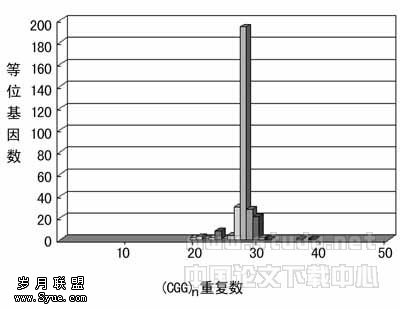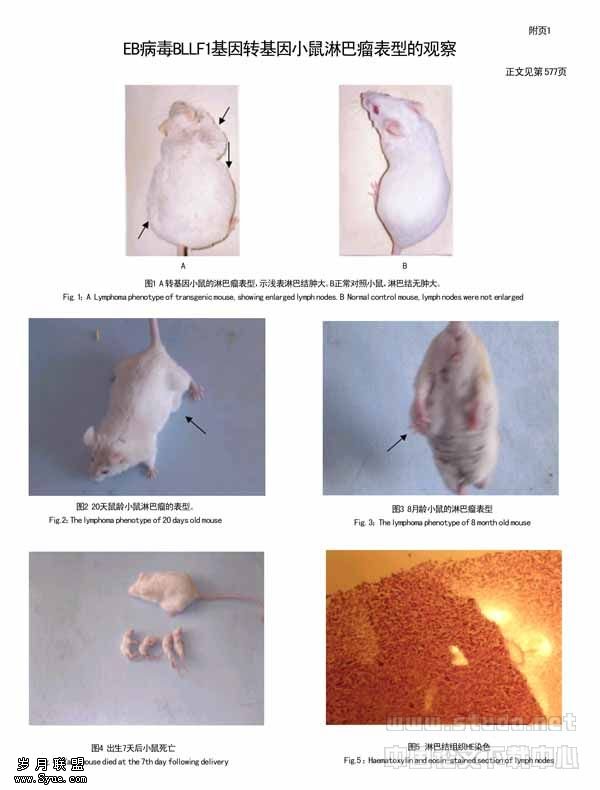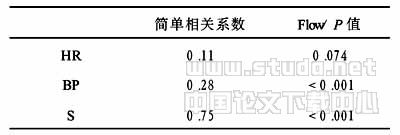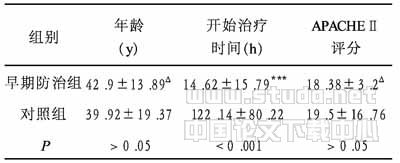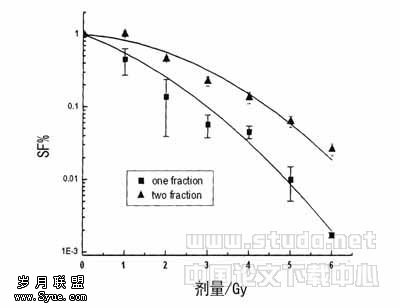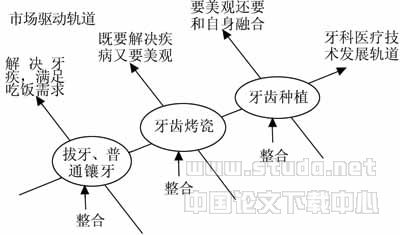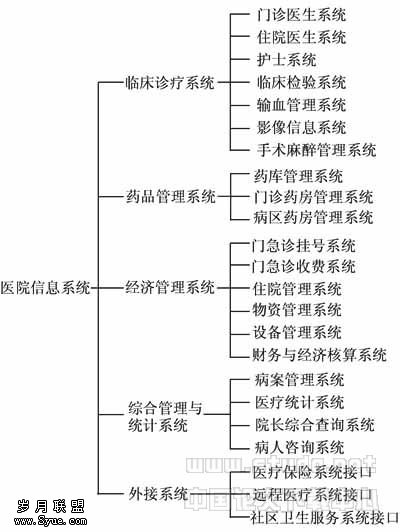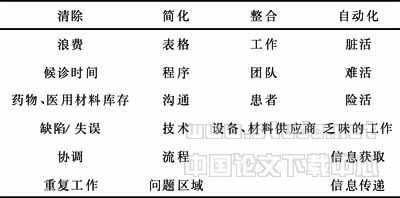Chronic Lymphocytic Leukemia: Recent Advances in Diagnosis a
【关键词】 CCL,•,Chronic,lymphocytic,leukemia,•,Rituximab,•,ZAP70
LEARNING OBJECTIVES
After completing this course, the reader will be able to:
Discuss prognostic markers for CLL, including ZAP70 expression, IgVH rearrangements, and CD38 expression.
Describe the latest chemotherapy regimens for CLL, including combinations containing nucleoside analogues and monoclonal antibodies.
Describe appropriate indications for initiation of treatment for CLL.
ABSTRACT
Chronic lymphocytic leukemia (CLL) is a low-grade B-lineage lymphoid malignancy but may have more heterogeneity than previously thought. Many cases require no treatment at all because of an indolent course, while other patients become symptomatic or develop signs of rapid progression. Treatment is usually noncurative and is directed at reducing the symptoms. Some molecular risk features may help delineate, at initial diagnosis, which patients will have a more aggressive course. Newer CLL treatment regimens incorporating purine nucleoside analogues and monoclonal antibodies have increased the rate of molecular complete remissions, which may lead to better survival times. Reduced intensity allogeneic transplant conditioning regimens have made the potentially curative modality more widely available. All these treatments have significant risks for infectious complications, which must be carefully weighed against the risks posed by the underlying disease. A proposed risk-based treatment algorithm is discussed.
DIAGNOSIS AND STAGING
Chronic lymphocytic leukemia (CLL) is predominantly a disease of older individuals; most patients are older than 50 at the time of initial diagnosis [1, 2]. Furthermore, the disease often has slow progression, so many of these patients ultimately succumb to other medical problems rather than to CLL. Additionally, a monoclonal lymphocytosis is present in up to 4% of elderly individuals, and most of these cases do not ever progress to meet the diagnostic criteria of CLL [3]. CLL may present as a lymph nodebased disease, called small lymphocytic lymphoma (SLL), and the treatment is generally the same as for CLL. However, CLL may also present in up to 5% of patients with large-cell (Richter’s) transformation in the lymph nodes, requiring more aggressive treatment with large-cell lymphoma regimens and with often poor outcome.
The most common presenting symptom in CLL is lymph node swelling, while smaller numbers of patients report "B" symptoms (fever, weight loss, or night sweats), and 25% of patients are asymptomatic. The most common physical findings with CLL include lymphadenopathy (87%), splenomegaly (54%), and hepatomegaly (14%). Occasionally, laboratory abnormalities are seen in newly diagnosed CLL. About 10% of patients present with a Coombs-positive autoimmune hemolytic anemia. Ten percent of patients may have hypogammaglobulinemia, and another 15% may have hypergammaglobulinemia or even a monoclonal gammopathy. Most asymptomatic patients are identified on the basis of an absolute lymphocytosis on routine complete blood count.
A bone marrow aspirate and biopsy are necessary for full diagnostic and prognostic information. Bone marrow findings in CLL include normal to high cellularity with a B lymphocyte population that is monoclonal for kappa or lambda light chain expression. The immunophenotype of this lymphocyte population includes the pathognomic coexpression of CD5 and CD19, as well as positivity for CD20, CD21, CD23, and CD24. Several variable immunophenotypic findings with prognostic importance, discussed later, include CD38 expression and intracellular expression of zeta-associated protein (ZAP70). Bone marrow should also be sent for cytogenetics, and a fluorescence in situ hybridization (FISH) panel for common chromosomal abnormalities (del[17p], del[11q2223], del[13q14], and trisomy 12) should be done in order to provide superior prognostic information.
Important diseases to exclude include mantle cell leukemia/lymphoma, hairy cell leukemia, and prolymphocytic leukemia (PLL). Mantle cell leukemia/lymphoma is distinguished from CLL by CD23 negativity and intracellular cyclin D1 expression, by immunohistochemistry or flow cytometry, and the presence of t(11;14), by cytogenetics and/ or FISH. Hairy cell leukemia and PLL are morphologically distinct from CLL and lack expression of CD5. Splenic marginal zone lymphoma (SMZL) with circulating villous lymphocytes may also mimic CLL, with bone marrow involvement, a serum monoclonal protein spike, and an indolent course. However, SMZL cells are generally morphologically distinct from CLL lymphocytes, with a plasmacytoid basophilic cytoplasm, and also express CD11c [4]. Rapidly enlarging lymph nodes should be biopsied to exclude the presence of Richter’s transformation, which would require more aggressive treatment than nontransformed CLL/SLL.
The earliest systems of CLL risk stratification rely on the measurement of disease bulk at initial diagnosis (Table 1). Rai et al. reported a staging system that includes lymphadenopathy, splenogmegaly, anemia, and thrombocytopenia as markers of progressive disease bulk, from stage 0 to 4 [5]. Binet et al. reported a simplified staging system that relies on the number of enlarged lymph nodes and the presence of anemia or thrombocytopenia for stages AC [6]. With both staging systems, patients with the most advanced stage have a predicted survival duration of 12 years, while patients with the lowest stage of disease have a median survival time of over 10 years. Staging for patients in suspected relapse is individualized and based on the sites of initial disease involvement. The Rai and Binet staging systems have not been validated in large studies for relapsed patients, and the prognosis for these patients is probably more correlated with their molecular risk features as well as duration of previous remission.
PROGNOSTIC FACTORS
Several biologic markers have been associated with a more aggressive form of CLL. These include rapid lymphocyte doubling time, cytogenetic findings, serum beta-2 micro-globulin (B2M), CD38 expression, unmutated (germline) immunoglobulin heavy chain gene, and ZAP70 expression. Rapid lymphocyte doubling time is usually defined as the doubling of peripheral blood absolute lymphocyte count (ALC) in less than 12 months. Montserrat et al. reported a median survival time of over 118 months for patients with slow lymphocyte doubling times, while patients with rapid doubling times had a median survival time of only 61 months [7], which is independent of Rai stage [8]. B-cell CLL/lymphoma 2 (BCL2) expression is associated with a shorter survival time in CLL [9]. Conflicting data exist regarding whether an elevated serum B2M level is an independent adverse prognostic feature [10, 11]. Elevated serum thymidine kinase has been identified as a risk factor for more aggressive disease [12].
CD38 is a cell surface molecule frequently expressed on leukemic cells in patients who experienced relatively early CLL progression [13]. The threshold for considering a case CD38-positive is expression in more than 30% of cells by flow cytometry. CD38 positivity is associated with significantly shorter overall survival and progression-free survival times [14], and also a poor response to fludarabine [15]. Ghia et al. reported that patients with CD38+ CLL had a 75% probability of progression at a median follow-up of 90 months, compared with 13% probability in patients without CD38 expression [16].
The absence of immunoglobulin heavy chain (IgVH) mutations, also termed germline IgVH, is also associated with a high risk for early progression [1719]. However, a test for the detection of IgVH mutations is not widely available. Expression of the intracellular signaling molecule ZAP70 has been identified in a majority of CLL cases without IgVH mutations, and ZAP70 expression is highly predictive of patients with more rapid disease progression and death [20, 21]. Prospective trials are ongoing to determine whether the treatment of patients with ZAP70+ CLL in a more aggressive fashion will improve clinical outcomes. Caution is warranted in interpreting results from ZAP70 assays, as intracellular flow cytometry can be a difficult assay to perform reproducibly even in experienced laboratories. Thus, ZAP70 analysis remains a prognostic tool of uncertain clinical use.
Several cytogenetic changes have been associated with poorer survival in newly diagnosed CLL patients. Dohner et al. reported the most extensive study of cytogenetics in CLL [22]. The most unfavorable feature was deletion of 17p, which was present in 7% of patients, who had a median survival time of 32 months. An intermediate risk was associated with the deletion of 11q [22, 23], the site of the ataxia-telangectasia (ATM) gene, which was present in 18% of patients (median survival time of 79 months). Certain cytogenetic changes were associated with a more favorable prognosis, including 13q14 deletion, present in approximately half of patients (median survival time of 133 months), and trisomy 12, present in 16% of patients (median survival time of 114 months). Also, the development of 17p deletion is associated with abnormalities in the tumor suppressor gene p53 and is more likely to occur as a clonal evolution after initial diagnosis [23]. Panels of FISH probes for common abnormalities may be used in the diagnosis of CLL, since metaphase cytogenetics may be difficult in the largely quiescent cells of CLL.
TREATMENT
Indications for Treatment
CLL is a disease that is often monitored for a number of years without treatment. Because of the lack of data demonstrating that early treatment of asymptomatic CLL results in any survival benefit, the National Cancer Institute Working Group (NCIWG) has published recommended criteria for treatment initiation [24]. These guidelines include the development of "B" symptoms (weight loss > 10% within 6 months, fevers for 2 weeks, night sweats, or extreme fatigue), worsening anemia and/or thrombocytopenia, autoimmune cytopenias, progressive splenomegaly, progressive lymphadenopathy, and lymphocyte doubling time of 6 months.
The choice of first-line treatment depends on the patient’s risk factors. Younger patients or those with higher stages or with adverse prognostic factors may benefit from more aggressive combination regimens and consideration for allogeneic transplant early in their disease course, as this is the only potentially curative therapy. Currently, no prospective data exist to support the early treatment of patients with adverse prognostic features, although it seems likely that attainment of complete molecular remission may lead to longer survival. Thus, any aggressive treatment should preferably be offered through a clinical trial when possible. Older patients and patients with no identifiable molecular adverse prognostic features are less likely to ever require treatment. When treatment is indicated in these patients, goals of therapy should focus on minimizing the disease symptoms while avoiding excessive risk for treatment-related toxicity.
The treatment of relapse requires careful analysis of a patient’s risk factors, response to prior therapy, duration of response, and comorbid medical conditions. If the previous duration of response was > 35 years, consideration may be given to repeating the previous treatment. For shorter remissions, therapy should be modified. For young patients with short remissions (< 12 years), allogeneic transplantation may be considered following retreatment and attainment of complete remission. For older or sicker patients, palliation should be used, with treatments less likely to induce myelosuppression or infectious risk.
CHEMOTHERAPY
In previous decades, CLL therapy consisted primarily of alkylating agents, such as chlorambucil . One limitation of this treatment is a 2.5-fold greater risk for secondary acute myeloid leukemia in patients with prior exposure to alkylating agents [25]. For older patients seeking palliation of disease symptoms, alkylating agents may have a useful therapeutic role, although there is no demonstrable survival benefit with any therapy in this patient population. Multiagent therapy is not indicated, as there is additional risk for toxicity without proven benefit. The chemotherapy regimen of cyclophosphamide, vincristine , and prednisone (CVP) was compared with chlorambucil and prednisone, and no difference in survival was noted after 7 years of follow-up [26].
Purine Nucleoside Analogues
Purine nucleoside analogues, such as fludarabine (FAMP), pentostatin , and cladribine , are highly active agents in the treatment of CLL. Fludarabine as a single agent was shown to have remarkable activity in a range of indolent lymphoid malignancies refractory to other treatments, including up to a 100% complete remission rate in relapsed CLL [27]. Fludarabine was shown to be superior to chlorambucil in a major intergroup study, with a higher response rate and longer disease-free interval [28]. Single-agent fludarabine also has response rates superior to those of several combination regimens, such as cyclophosphamide, doxorubicin , vincristine, and prednisone (CHOP) and CVP, in previously untreated CLL [29]. Keating et al. reported long-term results from 174 patients following initial treatment with fludarabine [30]. The overall response rate was 78%, and the median survival time was 63 months. Among responders, the median survival time was 74 months, and the median time to progression was 31 months.
The incorporation of fludarabine into combination regimens has resulted in further improvements in response rates. With the addition of cyclophosphamide to fludarabine (FC regimen), O’Brien et al. reported an overall response rate >80% in previously untreated CLL patients, and the median duration of response was not reached at 41 months [31]. Hallek et al. reported the results from 29 previously treated patients with advanced CLL using the FC regimen [32]. Five of 29 (17%) had complete responses and 24 of 29 (83%) had partial responses. The addition of rituximab (FCR regimen) appears to have further improved response rates, as discussed below.
Other purine nucleoside analogues also have demonstrated activity against primary and refractory CLL. Pentostatin has demonstrated efficacy against CLL, both as a single agent [33, 34] and in combination regimens [35, 36]. Pentostatin regimens may be given in a single day, making them more convenient than the multiday infusions of fludarabine, and they may have less myelosuppression than fludarabine. Cladribine has been studied in several small trials [3740]. Clofarabine is a newly approved nucleoside analogue indicated for the treatment of pediatric leukemia; trials are ongoing to determine its efficacy in CLL. In vitro cytotoxicity data show that clofarabine may be superior to cladribine in CLL cell lines [41]. Overall, the other nucleoside analogues appear to have roughly similar clinical efficacy as fludarabine, as summarized in Table 2, but there is a lack of randomized studies comparing nucleoside analogues.
Toxicities of nucleoside analogues are relatively frequent and may be occasionally severe. These include myelosuppression, which may predispose to a variety of infections, including infection by bacteria and fungi. There is also significant lymphosuppression, necessitating the use of Pneumocystis carinii and herpes simplex infection prophylaxis. Autoimmune hemolytic anemia has been reported. Long-term hematopoietic stem cell damage may also persist, as evidenced by the occasional difficulty in mobilization of autologous stem cells in some prior recipients of nucleoside analogues [42, 43]. Finally, there are rare reports of secondary acute myeloid leukemia following nucleoside analogue treatment [44].
IMMUNOTHERAPY
Rituximab
Rituximab is a humanized murine monoclonal antibody that binds CD20 and has activity against most B-lineage lymphoid malignancies, including CLL. Most studies in CLL have used higher rituximab doses than those used in lymphoma treatment because of lower CD20 density on CLL cells [45, 46]. Single-agent rituximab has rather limited efficacy in CLL. Rituximab has been added to the fludarabine [47] and fludarabine plus cyclophosphamide (FCR) [48] regimens, as well as the pentostatin plus cyclophosphamide (PCR) regimen [49] (Table 1). The addition of rituximab to fludarabine (FR regimen) has been shown to produce higher overall and complete response rates [50], as well as longer disease-free and overall survival times in previously untreated CLL patients [51]. The FCR regimen produces a high complete remission rate in both previously untreated [52] and relapsed CLL patients [53]. Common side effects of this regimen include infections and cytopenias; antibiotic prophylaxis for herpes simplex, fungi, bacteria, and Pneumocystis is often recommended.
Alemtuzumab
Alemtuzumab is a monoclonal antibody against CD52, an antigen expressed on lymphocytes (B, T, and NK cells), monocytes, and some granulocytes. It is approved for treatment of relapsed CLL and has been reviewed elsewhere [54]. Rates of molecular complete remission approach 38% using alemtuzumab in fludarabine-refractory patients [55, 56]. Alemtuzumab has also been studied in combinations with rituximab [57] and with the FCR combination [58]. Trials are also studying the use of alemtuzumab as a consolidative treatment following initial combination therapy.
Subcutaneous administration of alemtuzumab is better tolerated than i.v. administration [59]. Comparable serum antibody levels were found with s.c. administration, and efficacy was similar. Immediate side effects of s.c. alemtuzumab injection are predominantly local, including localized erythema, and the potentially severe infusional side effects such as fever and chills are rare. Longer-term side effects of alemtuzumab relate to its profound immunosuppression, leading to a relatively high rate of infectious complications, including cytomegalovirus reactivation and Epstein-Barr virus lymphoproliferative disease.
Other Immunotherapies
Denileukin deftitox is an interleukin-2 (IL2) and diphtheria toxin fusion protein that targets CD25, which is part of the IL2 receptor complex. It is approved for the treatment of cutaneous T cell lymphoma (CTCL) but not CLL. While CD25 is primarily expressed on normal and malignant T lymphocytes, there is evidence that this agent also has efficacy in B lineage CLL. A phase II study of denileukin deftitox in 12 fludarabine-refractory CLL patients revealed that 11 patients had a reduction in their circulating CLL cells, and six of these reductions were greater than 95% [60]. Other immunotherapies in clinical development include: anti-CD23 anti-CD22 , apolizumab , and anti-CD80 (anti-B7, IDEC-114; Biogen-IDEC).
HEMATOPOIETIC CELL TRANSPLANTATION
Allogeneic
Allogeneic hematopoietic cell transplantation (HCT) is the only curative CLL treatment. Until recently, allogeneic HCT relied on myeloablative doses of chemoradiotherapy, which made the treatment unacceptably risky for the majority of CLL patients. The largest reported long-term experience of myeloablative allogeneic HCT for CLL was reported by Khouri et al. [61]. Twenty-eight patients were treated for CLL with allogeneic HCT and myeloablative doses of cyclophosphamide and total body irradiation (TBI). The investigators reported 5-year progression-free survival rates of 78% for previously untreated patients and 31% for chemotherapy-refractory patients. However, the mortality rate at 100 days was 11%. These results demonstrate the potentially curative nature of allogeneic transplantation for CLL and also suggest that delaying allotransplant until the development of refractory disease may result in worse clinical outcomes.
Nonmyeloablative Allogeneic
The role of dose escalation in allogeneic transplantation has been called into question, and many investigators suggest that allogeneic antileukemic effects represent the most important therapeutic aspect in CLL. In nonmyeloablative, or reduced-intensity, approaches, using immunosuppressive doses of purine nucleoside analogues and relatively low doses of either an alkylating agent or irradiation, rates of engraftment similar to fully ablative conditioning regimens have been achieved with lower rates of early toxicity [62, 63]. Representative nonmyeloablative transplant clinical trials are summarized in Table 3. Excellent rates of disease response, including molecular remissions, have been reported for CLL, as summarized in Table 4.
Early evidence suggests that the graft versus leukemia (GVL) effect is present against disease with poor prognostic factors. Ritgen et al. report that seven of nine patients with unmutated (germline) IgH genes remained in molecular complete remission (assessed by polymerase chain reaction) at a median of 25 months after nonmyeloablative allotransplantation [64]. Further proof of a GVL effect is demonstrated by the induction of complete remission of CLL in many patients with persistent disease following the administration of donor leukocyte infusion [65]. Finally, allotransplant recipients experiencing chronic graft-versus-host disease (GVHD) have a significantly lower risk for CLL relapse than patients experiencing no GVHD [66].
Autologous
Studies involving autologous transplantation and high-dose chemotherapy for CLL have failed to demonstrate a survival advantage despite initial high rates of complete molecular response [67]. This may be due in part to intrinsic chemoresistance of CLL, lack of a steep dose-response curve, or the reinfusion of malignant cells in the thawed hematopoietic progenitor cell product. Purging strategies with monoclonal antibodies have not improved survival, and infectious complications are frequent [68, 69]. In view of limited efficacy, the use of autotransplantation in CLL cannot be recommended outside the context of a clinical trial.
CONCLUSIONS: A RISK-BASED TREATMENT APPROACH
Recent advances in the management of CLL include molecular diagnostic techniques, nucleoside analogue combination regimens, monoclonal antibodies, and nonmyeloablative allogeneic stem cell transplantation. Improvements in diagnostic techniques, such as molecular cytogenetics to detect ZAP70 expression and the absence of IgVH rearrangements, may help target aggressive therapy to high-risk patients, although it remains unproven whether this will result in higher rates of long-term survival.
If indications for treatment exist, patients should generally be offered the opportunity to participate in a clinical trial. In the absence of a clinical trial, first-line therapy in healthy patients usually involves a combination regimen containing a nucleoside analogue, such as a fludarabine. Older patients with indications for treatment may receive chlorambucil and prednisone. Younger patients with no comorbidities and high-risk disease attributes may be candidates for a more intense combination, such as FCR or PCR, which increase the likelihood of attaining a complete molecular remission. In first remission, patients are generally followed until demonstrating signs of relapse. Following retreatment with a relapse therapy, such as alemtuzumab, appropriate patients may be considered for nonmyeloablative allogeneic transplantation if a suitable matched sibling donor is available. Nontransplant candidates may be followed until additional relapse occurs and, when treatment is again indicated, may receive retreatment with a previously administered regimen or investigational agents in a clinical trial. All these treatments have risks for significant infectious complications, which must be carefully weighed against the risks of their CLL. With recent improvements in prognostic features and treatments, the management of CLL is now much more challenging and rewarding than in past decades.
DISCLOSURE OF POTENTIAL CONFLICTS OF INTEREST
The author indicates no potential conflicts of interest.
REFERENCES
Foon KA, Rai KR, Gale RP. Chronic lymphocytic leukemia: new insights into biology and therapy. Ann Intern Med 1990;113:525539.
O’Brien S, del Giglio A, Keating M. Advances in the biology and treatment of B-cell chronic lymphocytic leukemia. Blood 1995;85:307318.
Ghia P, Prato G, Scielzo C et al. Monoclonal CD5+ and CD5 B-lymphocyte expansions are frequent in the peripheral blood of the elderly. Blood 2004;103:23372342.
Catovsky D, Matutes E. Splenic lymphoma with circulating villous lymphocytes/splenic marginal-zone lymphoma. Semin Hematol 1999;36:148154.
Rai KR, Sawitsky A, Cronkite EP et al. Clinical staging of chronic lymphocytic leukemia. Blood 1975;46:219234.
Binet JL, Auquier A, Dighiero G et al. A new prognostic classification of chronic lymphocytic leukemia derived from a multivariate survival analysis. Cancer 1981;48:198206.
Montserrat E, Sanchez-Bisono J, Vinolas N et al. Lymphocyte doubling time in chronic lymphocytic leukaemia: analysis of its prognostic significance. Br J Haematol 1986;62:567575.
Molica S, Alberti A. Prognostic value of the lymphocyte doubling time in chronic lymphocytic leukemia. Cancer 1987;60:27122716.
Faderl S, Keating MJ, Do KA et al. Expression profile of 11 proteins and their prognostic significance in patients with chronic lymphocytic leukemia (CLL). Leukemia 2002;16:10451052.
Spati B, Child JA, Kerruish SM et al. Behaviour of serum beta 2-microglobulin and acute phase reactant proteins in chronic lymphocytic leukaemia. A multicentre study. Acta Haematol 1980;64:7986.
Molica S, Levato D, Cascavilla N et al. Clinico-prognostic implications of simultaneous increased serum levels of soluble CD23 and beta2-microglobulin in B-cell chronic lymphocytic leukemia. Eur J Haematol 1999;62:117122.
Hallek M, Langenmayer I, Nerl C et al. Elevated serum thymidine kinase levels identify a subgroup at high risk of disease progression in early, non-smoldering chronic lymphocytic leukemia. Blood 1999;93:17321737.
Damle RN, Wasil T, Fais F et al. Ig V gene mutation status and CD38 expression as novel prognostic indicators in chronic lymphocytic leukemia. Blood 1999;94:18401847.
Jelinek DF, Tschumper RC, Geyer SM et al. Analysis of clonal B-cell CD38 and immunoglobulin variable region sequence status in relation to clinical outcome for B-chronic lymphocytic leukaemia. Br J Haematol 2001;115:854861.
Del Poeta G, Maurillo L, Venditti A et al. Clinical significance of CD38 expression in chronic lymphocytic leukemia. Blood 2001;98:26332639.
Ghia P, Guida G, Stella S et al. The pattern of CD38 expression defines a distinct subset of chronic lymphocytic leukemia (CLL) patients at risk of disease progression. Blood 2003;101:12621269.
Hamblin TJ, Davis Z, Gardiner A et al. Unmutated Ig V(H) genes are associated with a more aggressive form of chronic lymphocytic leukemia. Blood 1999;94:18481854.
Lin K, Sherrington PD, Dennis M et al. Relationship between p53 dysfunction, CD38 expression, and IgV(H) mutation in chronic lymphocytic leukemia. Blood 2002;100:14041409.
Krober A, Seiler T, Benner A et al. V(H) mutation status, CD38 expression level, genomic aberrations, and survival in chronic lymphocytic leukemia. Blood 2002;100:14101416.
Crespo M, Bosch F, Villamor N et al. ZAP-70 expression as a surrogate for immunoglobulin-variable-region mutations in chronic lymphocytic leukemia. N Engl J Med 2003;348:17641775.
Wiestner A, Rosenwald A, Barry TS et al. ZAP-70 expression identifies a chronic lymphocytic leukemia subtype with unmutated immunoglobulin genes, inferior clinical outcome, and distinct gene expression profile. Blood 2003;101:49444951.
Dohner H, Stilgenbauer S, Benner A et al. Genomic aberrations and survival in chronic lymphocytic leukemia. N Engl J Med 2000;343:19101916.
Thornton PD, Gruszka-Westwood AM, Hamoudi RA et al. Characterisation of TP53 abnormalities in chronic lymphocytic leukaemia. Hematol J 2004;5:4754.
Cheson BD, Bennett JM, Grever M et al. National Cancer Institute-sponsored Working Group guidelines for chronic lymphocytic leukemia: revised guidelines for diagnosis and treatment. Blood 1996;87:49904997.
Robertson LE, Estey E, Kantarjian H et al. Therapy-related leukemia and myelodysplastic syndrome in chronic lymphocytic leukemia. Leukemia 1994;8:20472051.
Raphael B, Andersen JW, Silber R et al. Comparison of chlorambucil and prednisone versus cyclophosphamide, vincristine, and prednisone as initial treatment for chronic lymphocytic leukemia: long-term follow-up of an Eastern Cooperative Oncology Group randomized clinical trial. J Clin Oncol 1991;9:770776.
Redman JR, Cabanillas F, Velasquez WS et al. Phase II trial of fludarabine phosphate in lymphoma: an effective new agent in low-grade lymphoma. J Clin Oncol 1992;10:790794.
Rai KR, Peterson BL, Appelbaum FR et al. Fludarabine compared with chlorambucil as primary therapy for chronic lymphocytic leukemia. N Engl J Med 2000;343:17501757.
Leporrier M, Chevret S, Cazin B et al. Randomized comparison of fludarabine, CAP, and ChOP in 938 previously untreated stage B and C chronic lymphocytic leukemia patients. Blood 2001;98:23192325.
Keating MJ, O’Brien S, Lerner S et al. Long-term follow-up of patients with chronic lymphocytic leukemia (CLL) receiving fludarabine regimens as initial therapy. Blood 1998;92:11651171.
O’Brien SM, Kantarjian HM, Cortes J et al. Results of the fludarabine and cyclophosphamide combination regimen in chronic lymphocytic leukemia. J Clin Oncol 2001;19:14141420.
Hallek M, Schmitt B, Wilhelm M et al. Fludarabine plus cyclophosphamide is an efficient treatment for advanced chronic lymphocytic leukaemia (CLL): results of a phase II study of the German CLL Study Group. Br J Haematol 2001;114:342348.
Johnson SA, Catovsky D, Child JA et al. Phase I/II evaluation of pentostatin (2'-deoxycoformycin) in a five day schedule for the treatment of relapsed/refractory B-cell chronic lymphocytic leukaemia. Invest New Drugs 1998;16:155160.
Ho AD, Thaler J, Stryckmans P et al. Pentostatin in refractory chronic lymphocytic leukemia: a phase II trial of the European Organization for Research and Treatment of Cancer. J Natl Cancer Inst 1990;82:14161420.
Weiss MA, Maslak PG, Jurcic JG et al. Pentostatin and cyclophosphamide: an effective new regimen in previously treated patients with chronic lymphocytic leukemia. J Clin Oncol 2003;21:12781284.
Waselenko JK, Grever MR, Beer M et al. Pentostatin (Nipent) and chlorambucil with granulocyte-macrophage colony-stimulating factor support for patients with previously untreated, treated, and fludarabine-refractory B-cell chronic lymphocytic leukemia. Semin Oncol 2000;27(suppl 5):4451.
Robak T, Blonski JZ, Kasznicki M et al. Cladribine with prednisone versus chlorambucil with prednisone as first-line therapy in chronic lymphocytic leukemia: report of a prospective, randomized, multicenter trial. Blood 2000;96:27232729.
Robak T, Blonski JZ, Kasznicki M et al. Cladribine combined with cyclophosphamide is highly effective in the treatment of chronic lymphocytic leukemia. Hematol J 2002;3:244250.
Montillo M, Tedeschi A, O’Brien S et al. Phase II study of cladribine and cyclophosphamide in patients with chronic lymphocytic leukemia and prolymphocytic leukemia. Cancer 2003;97:114120.
Saven A, Lemon RH, Kosty M et al. 2-Chlorodeoxyadenosine activity in patients with untreated chronic lymphocytic leukemia. J Clin Oncol 1995;13:570574.
Lindemalm S, Liliemark J, Gruber A et al. Comparison of cytotoxicity of 2-chloro- 2'-arabino-fluoro-2'-deoxyadenosine (clofarabine) with cladribine in mononuclear cells from patients with acute myeloid and chronic lymphocytic leukemia. Haematologica 2003;88:324332.
Tournilhac O, Cazin B, Lepretre S et al. Impact of frontline fludarabine and cyclophosphamide combined treatment on peripheral blood stem cell mobilization in B-cell chronic lymphocytic leukemia. Blood 2004;103:363365.
Lysak D, Koza V, Steinerova K et al. Mobilization of peripheral blood stem cells in CLL patients after front-line fludarabine treatment. Ann Hematol 2005;84:456461.
Lam CC, Ma ES, Kwong YL. Therapy-related acute myeloid leukemia after single-agent treatment with fludarabine for chronic lymphocytic leukemia. Am J Hematol 2005;79:288290.
Keating M, O’Brien S. High-dose rituximab therapy in chronic lymphocytic leukemia. Semin Oncol 2000;6(suppl 12):8690.
O’Brien SM, Kantarjian H, Thomas DA et al. Rituximab dose-escalation trial in chronic lymphocytic leukemia. J Clin Oncol 2001;19:21652170.
Byrd JC, Peterson BL, Morrison VA et al. Randomized phase 2 study of fludarabine with concurrent versus sequential treatment with rituximab in symptomatic, untreated patients with B-cell chronic lymphocytic leukemia: results from Cancer and Leukemia Group B 9712 (CALGB 9712). Blood 2003;101:614.
Lamanna N, Weiss MA, Maslak PG et al. Sequential therapy with fludarabine, high dose cyclophosphamide, and rituximab induces a high incidence of complete response in patients with chronic lymphocytic leukemia (CLL). Proc Am Soc Clin Oncol 2003;22:580.
Weiss MA, Lamanna N, Maslak PG et al. Pentostatin, cyclophosphamide and rituximab (PCR therapy): a new active regimen for previously treated patients with chronic lymphocytic leukemia (CLL). Proc Am Soc Clin Oncol 2003;22:580.
Schulz H, Klein SK, Rehwald U et al. Phase 2 study of a combined immunochemotherapy using rituximab and fludarabine in patients with chronic lymphocytic leukemia. Blood 2002;100:31153120.
Byrd JC, Rai KR, Peterson BL et al. The addition of rituximab to fludarabine significantly improves progression-free and overall survival in previously untreated chronic lymphocytic leukemia (CLL) patients. Proc Am Soc Hematol 2003;102:245a.
Keating MJ, O’Brien S, Albitar M et al. Early results of a chemoimmunotherapy regimen of fludarabine, cyclophosphamide, and rituximab as initial therapy for chronic lymphocytic leukemia. J Clin Oncol 2005;23:40794088.
Wierda W, O’Brien S, Wen S et al. Chemoimmunotherapy with fludarabine, cyclophosphamide, and rituximab for relapsed and refractory chronic lymphocytic leukemia. J Clin Oncol 2005;23:40704078.
Moreton P, Hillmen P. Alemtuzumab therapy in B-cell lymphoproliferative disorders. Semin Oncol 2003;30:493501.
O’Brien SM, Kantarjian HM, Thomas DA et al. Alemtuzumab as treatment for residual disease after chemotherapy in patients with chronic lymphocytic leukemia. Cancer 2003;98:26572663.
Lozanski G, Heerema NA, Flinn IW et al. Alemtuzumab is an effective therapy for chronic lymphocytic leukemia with p53 mutations and deletions. Blood 2004;103:32783281.
Faderl S, Thomas DA, O’Brien S et al. Experience with alemtuzumab plus rituximab in patients with relapsed and refractory lymphoid malignancies. Blood 2003;101:34133415.
Weirda W, Faderl S, O’Brien S et al. Combined cyclophosphamide, fludarabine, alemtuzumab, and rituximab (CFAR) is active for relapsed/refractory patients with CLL. Blood 2004;104:101a.
Hale G, Rebello P, Brettman LR et al. Blood concentrations of alemtuzumab and antiglobulin responses in patients with chronic lymphocytic leukemia following intravenous or subcutaneous routes of administration. Blood 2004;104:948955.
Frankel AE, Fleming DR, Hall PD et al. A phase II study of DT fusion protein denileukin diftitox in patients with fludarabine-refractory chronic lymphocytic leukemia. Clin Cancer Res 2003;9:35553561.
Khouri IF, Keating MJ, Saliba RM et al. Long-term follow-up of patients with CLL treated with allogeneic hematopoietic transplantation. Cytotherapy 2002;4:217221.
Giralt S, Estey E, Albitar M et al. Engraftment of allogeneic hematopoietic progenitor cells with purine analog-containing chemotherapy: harnessing graft-versus-leukemia without myeloablative therapy. Blood 1997;89:45314536.
Slavin S, Nagler A, Naparstek E et al. Nonmyeloablative stem cell transplantation and cell therapy as an alternative to conventional bone marrow transplantation with lethal cytoreduction for the treatment of malignant and nonmalignant hematologic diseases. Blood 1998;91:756763.
Ritgen M, Stilgenbauer S, von Neuhoff N et al. Graft-versus-leukemia activity may overcome therapeutic resistance of chronic lymphocytic leukemia with unmutated immunoglobulin variable heavy-chain genestatus: implications of minimal residual disease measurement with quantitative PCR. Blood 2004;104:26002602.
Rondon G, Giralt S, Huh Y et al. Graft-versus-leukemia effect after allogeneic bone marrow transplantation for chronic lymphocytic leukemia. Bone Marrow Transplant 1996;18:669672.
Dreger P, Brand R, Hansz J et al. Treatment-related mortality and graft-versus-leukemia activity after allogeneic stem cell transplantation for chronic lymphocytic leukemia using intensity-reduced conditioning. Leukemia 2003;17:841848.
Milligan DW, Fernandes S, Dasgupta R et al. Results of the MRC pilot study show autografting for younger patients with chronic lymphocytic leukemia is safe and achieves a high percentage of molecular responses. Blood 2005;105:397404.
Altes A, Sierra J, Esteve J et al. CD34+-enriched-CD19+-depleted autologous peripheral blood stem cell transplantation for chronic lymphoproliferative disorders: high purging efficiency but increased risk of severe infections. Exp Hematol 2002;30:824830.
Trneny M, Salkova J, Karban J et al. Combined therapeutic modality with rituximab, fludarabine and cyclophosphamide followed by high dose therapy with autologous stem cell transplantation (ASCT) leads to excellent response rate and high probability of molecular remission in chronic lymphocytic leukemia (CLL) patients. Proc Am Soc Hematol 2002;100:3176a.
Bosch F, Ferrer A, Lopez-Guillermo A et al. Fludarabine, cyclophosphamide and mitoxantrone in the treatment of resistant or relapsed chronic lymphocytic leukaemia. Br J Haematol 2002;119:976984.
Saven A, Lemon RH, Kosty M et al. 2-Chlorodeoxyadenosine activity in patients with untreated chronic lymphocytic leukemia. J Clin Oncol 1995;13:570574.
Byrd JC, Peterson B, Piro L et al. A phase II study of cladribine treatment for fludarabine refractory B cell chronic lymphocytic leukemia: results from CALGB study 9211. Leukemia 2003;17:323377.
Khouri IF, Saliba RM, Giralt SA et al. Nonablative allogeneic hematopoietic transplantation as adoptive immunotherapy for indolent lymphoma : low incidence of toxicity, acute graft-versus-host disease, and treatment-related mortality. Blood 2001;98:35953599.
Childs R, Clave E, Contentin N et al. Engraftment kinetics after nonmyeloablative allogenic peripheral blood stem cell transplantation: full donor T-cell chimerism precedes alloimmune responses. Blood 1999;94:32343241.
Pedrazzoli P, Da Prada GA, Giorgiani G et al. Allogeneic blood stem cell transplantation alter a reduced-intensity, preparative regimen: a pilot study in patients with refractory malignancies. Cancer 2002;94:24092415.
Carella AM, Cavaliere M, Lerma E et al. Autografting followed by nonmyeloablative immunosuppressive chemotherapy and allogeneic peripheral-blood hematopoietic ítem cell transplantation as treatment of resistant Hodgkin’s disease and non-Hodgkin’s lymphoma. Clin Oncol 2000;18:39183924.
Liu D, Sieter K, Ciao JW. Map Regimen: A Novel Non-Myeloablative Conditioning Regimen of Mitoxantrone, Ara-C, and Pentostatin (MAP Regimen) for Hematological Malignancies. Proc Am Soc Hematology 2002:2451(poster).
Schetelig J, Thiede C, Bomhauser M et al. Evidence of a graft-versus-leukemia effect in chronic hymphocytic leukemia after reduced-intensity conditioning and allogeneic stem cell transplantation: the Cooperative German Transplant Study Group. J Clin Oncol 2003;21:27472753.
Corradini P, Tarella C, Olivieri A et al. Reduced-intensity conditioning followed by allografting of hematopoietic cells can produce clinical and molecular remissions in patients with poor-risk hematologic malignancies. Blood 2002;99:7582.
McSweeney PA, Niederwieser D, Shizuru JA et al. Hematopoietic cell transplantation in older patients with hematologic malignancies: replacing high-dose cytotoxic therapy with graft-versus-tumor effects. Blood 2001;97:33903400.


